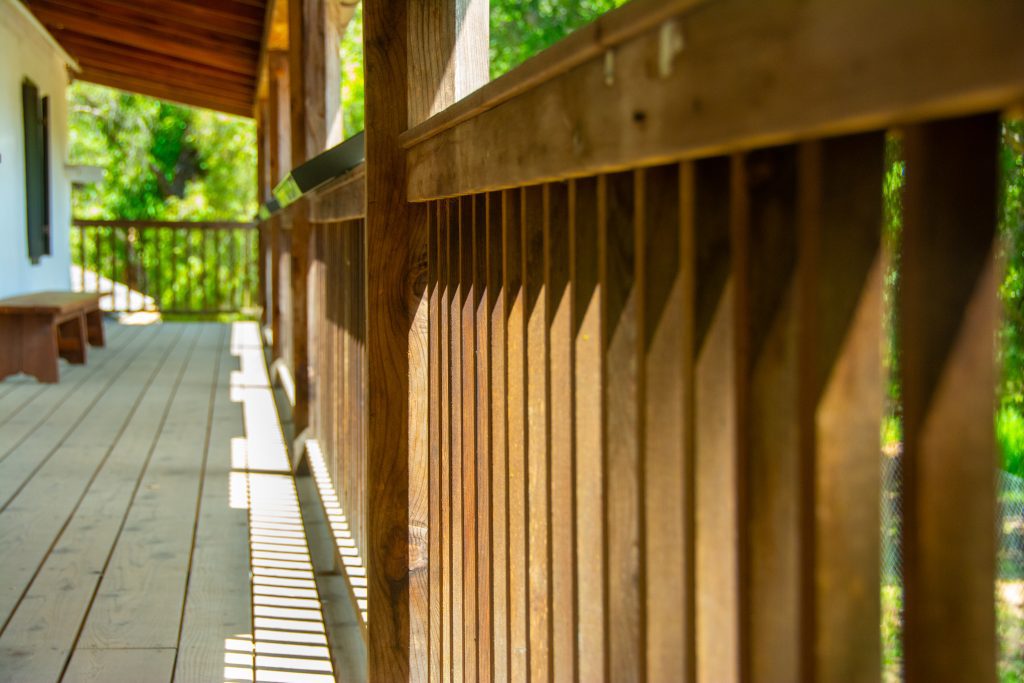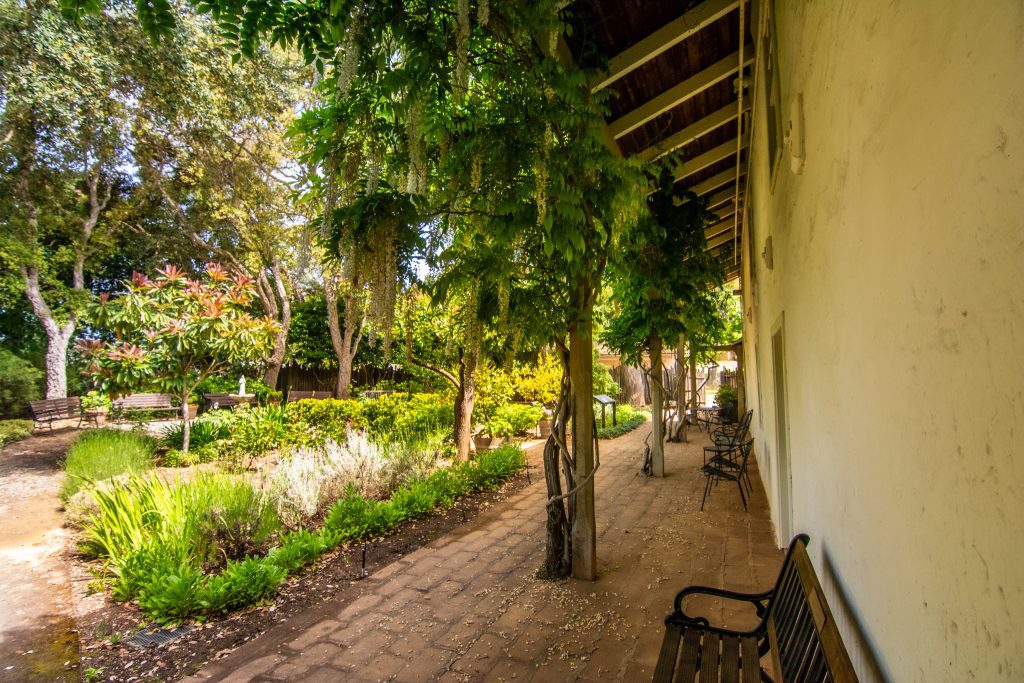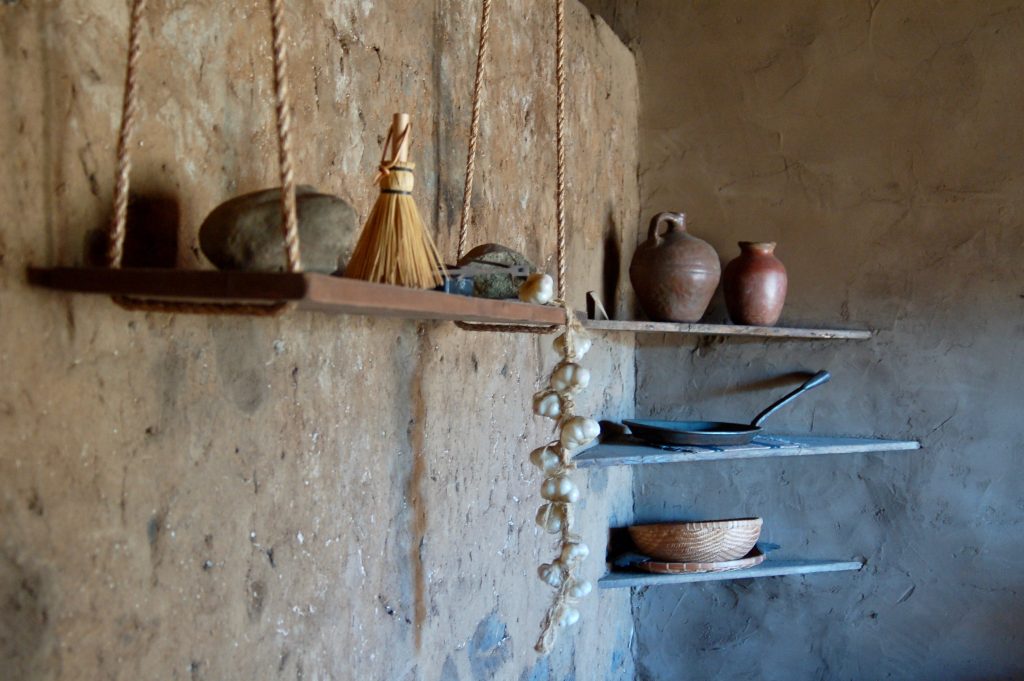Castro Adobe State Historic Park
About
Located in Larkin Valley near Watsonville, the two-story Castro Adobe is one of the finest examples of a rancho hacienda in the Monterey Bay area.
Friends is leading a multi-year restoration effort to preserve and interpret the Castro and is partnering with CA State Parks to open the adobe as a State Historic Park. The Castro Adobe will be the first State Historic Park in South County and only the second State Historic Park in Santa Cruz County (the first being Santa Cruz Mission State Historic Park).
Directions
The Castro Adobe is located at 184 Old Adobe Road, Watsonville. Take Highway 1 to the Buena Vista exit. Drive east on Buena Vista until the Larkin Valley Road intersection stop sign. Diagonally, going up the hill to the left is Old Adobe Road, a one lane private road. Travel up Old Adobe Road approximately 1 mile. The Rancho San Andrés Castro Adobe State Historic Park is on the right side of the road.
Check the Santa Cruz METRO schedule for public transportation options.
Things to do
Visit the historical/cultural siteSee the exhibits and take part in the interpretive programs, including guided tours.
Fees and Passes
Carpooling is encouraged as parking is limited. Parking is free. Donations are gratefully accepted.
Services
- Interpretive programs
- Historical displays
- Restrooms
Field Trips
This is a Kids2Parks Participating Park!
Kids2Parks is an innovative park-equity program to bring students from Title 1 schools to State Park field trips. The program, a partnership between California State Parks and Friends of Santa Cruz State Parks, increases the number of students who have visited a state park or beach by reducing barriers to access. The program offers transportation funding for field trips to all Title 1 schools in Santa Cruz County and select Title 1 schools in San Mateo, and Santa Clara Counties. Learn more.
Volunteer
Are you interested in California’s history and culture? Are you looking for a fun and unique way to give something back to your community? Do you enjoy working with people of all ages, backgrounds, and national origins? If you answered “yes” and are at least 18 years old, you are eligible to apply for a volunteer job with Rancho San Andres Castro Adobe State Historic Park in Watsonville. Call (831) 226-9669 or or email to apply. Learn more here.
History
In 1988 noted adobe conservationist Edna Kimbro and her husband Joe purchased the property as their home. The building was badly damaged the following year in the 1989, Loma Prieta Earthquake. The Castro Adobe was wrapped in tarps and uninhabitable. Edna Kimbro whose legendary career advocating for the preservation and conservation of adobe structures, led a community effort to have the State of California acquire the property. Assembly Member Fred Keeley sponsored legislation which passed in 1999 for the public acquisition of the Castro Adobe. California State Parks took ownership from the Kimbro’s in 2002, launching a 20-year community effort to repair and restore the adobe.
In 2007, two years after Edna Kimbro’s passing, Friends of Santa Cruz State Parks (Friends) began to carry on her work in collaboration with California State Parks. Over the next 15 years, the community came together to repair and restore the historic adobe inside and out. Work has included earthquake repairs using handmade 85-pound adobe bricks; seismic stabilization and a new roof; strengthening the second story with an innovative steel beam; installation of a lift to guarantee universal access to the second floor; the addition of electrical and fire suppression systems; restoration of the historic cocina (kitchen) and the Potter-Church Garden; procurement of historic furnishings and completion of interpretive planning.
Friends is launching the final phase of creating the Castro Adobe house museum, which will include installing educational exhibits and furnishings in the adobe. The end result of this effort will be a carefully restored historic adobe building with innovative interactive exhibits and loads of community support.
After completion of the museum, Friends will complete California’s newest State Historic Park, which will include establishing the Kimbro House Visitor Center & Archive; restoring the habitat lands leading to the nearby stream; creating accessible paths; installing parking and restrooms; and making the park a leader in sustainability. Please join us!
Thousands of people – including hundreds of elementary students have visited the park since 2015 through open house events, private tours, special events and school field trips including through the popular Kids2Parks program.
Edna E. Kimbro Archive
The purpose of the Edna E. Kimbro Archive is to organize, preserve and protect in perpetuity the resources associated with Edna Kimbro’s personal library and research. Our goal is to make this material accessible to researchers, students, professionals, and the public, and to provide research support to further the study of early California history. Stewards of the Edna E. Kimbro Archive continue to collect, organize, and preserve books, reports, personal papers, oral histories, slide/photographs/videos, digital files, maps and artifacts of enduring value which document the Castro Adobe, the Castro family, Mission-era and Mexican–era adobe buildings, and early Santa Cruz, California, Western and Southwestern history and architecture.
Click here to learn more and support the Edna E. Kimbro Archive.
Book: The Castro Adobe in the Twentieth Century
To learn more about the Castro Adobe’s rich history, read our book. Writer, historian and one-time Castro Adobe owner Suzanne Paizis traced the history of the Castro Adobe and the many families who called it home from 1906–1989, compiling her research in The Castro Adobe in the Twentieth Century: From Earthquake to Earthquake, the unrivaled chronicle of the property and its inhabitants.
Working with respected writer Traci Hukill, Friends commissioned an update to the original book in partnership with Bookshop Santa Cruz. In the second edition, nine new chapters pick up after the Loma Prieta Earthquake to tell the unlikely story of how a grand old adobe, fallen on hard times, is being reborn as the Castro Adobe State Historic Park with help from Friends of Santa Cruz State Parks, California State Parks and a community of passionate grassroots supporters. The book was published in 2018.
The book is available online, at all ParkStores and at Castro Adobe open house events. Cost is $29.99 and all proceeds benefit the Castro Adobe.
Recreate Responsibly
Before you visit, check the Recreate Responsibly page to protect yourself, family, friends and your community by following these measures during your visit.
More Info
- Follow the restoration effort in the Castro Blog.
- Call (831) 226-9669 or email for information about visiting the Castro.





